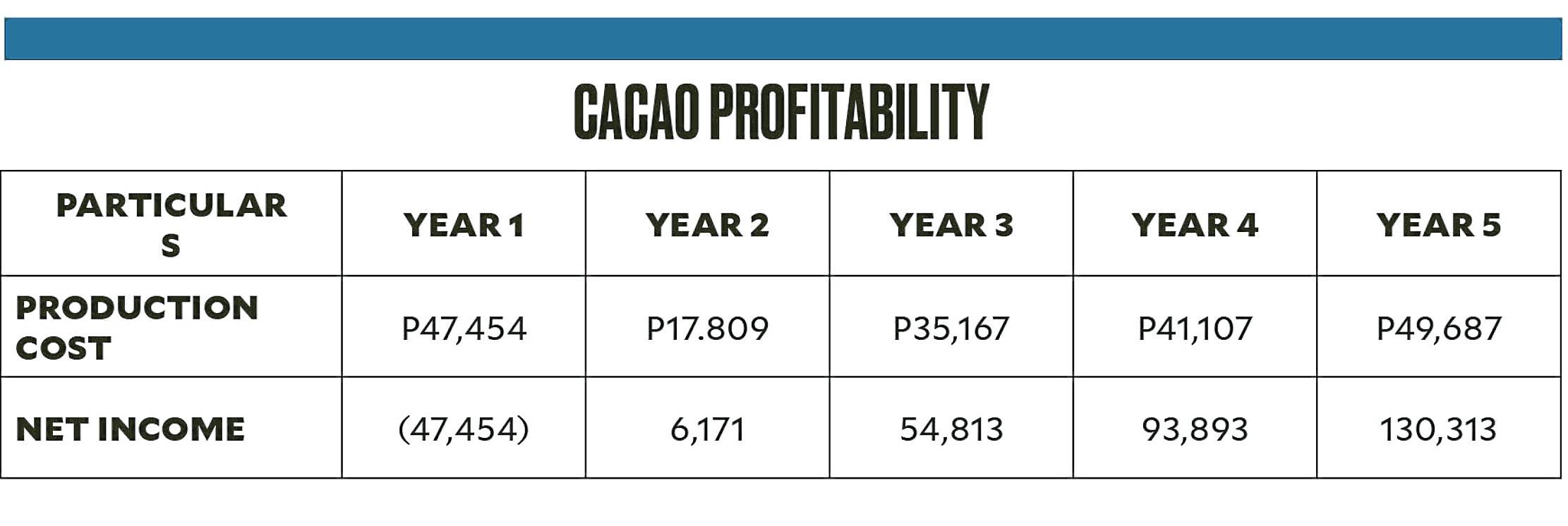
Unless intercropping is implemented in our coconut farms, our coconut farmers will remain the poorest sector in our economy.
We currently have 2.5 million coconut farmers tilling 3.6 million hectares. They are located in 69 out of 82 provinces.
Livelihood Funds, an investment fund helping agricultural projects in rural areas, states: “Filipino coconut farmers are the poorest in their country, with around 50 percent living on much less than $2 a day. A clear majority lack technical support and access to market and financing. Farmers are not adequately managed and, as a matter of fact, coconut yields in the Philippines are two to three times lower than in Brazil or in India.”
The government must tap a finally available coconut levy fund of P75 billion in cash and P50 billion in assets to provide support for farmers.
Cacao is recommended for intercropping. Besides, we currently import more than 70 percent of our cacao needs.
READ: ‘Nib’ it in the bud: Why PH cacao industry is ahead of the game
Ironically, while we can produce this much under our coconut trees, we have no concept of intercropping.
Today, the Ivory Coast is the largest source of cacao, producing 45 percent of the world’s total. But Africanews reported: “Cocoa shipments to the ports in the Ivory Coast are expected to fall by 28.5 percent year-on-year in the first quarter of the 2023/2024 season.”
This should send a signal to our Philippine cocoa producers.
Utilization
A multicrop system has clear advantages compared to a monocrop system.
University of the Philippines’ Edna Aguilar, the lead expert in our coconut industry plan, said: “Utilizing the area under coconut will substantially increase agricultural production without opening up new land. Intercropping 40 percent of the coconut area could add significantly to the existing agricultural production area, without increasing the total net area of planting.”
Given the Ivory Coast situation, which opens up a larger market and new opportunities for our cacao producers, we interviewed Armi Lopez-Garcia, president of the Philippine Cacao Industry Association. She recently arrived from the Cacao Association of Asia conference in Singapore.
“During this conference, I learned that much of the difficulty that the Ivory Coast is experiencing is because their cacao is mostly produced in monocrop plantations,” she says.
A monocrop system has a disadvantage. When disease infects one plant, it spreads rapidly and decreases both the volume and income of the farmer.
We must therefore favor a multicrop system, such as cacao intercropped in between coconut trees. We can even have a multistory system: under coconut trees, cacao can be planted alongside other produce like root crops, pineapples and other fruits and vegetables. This will further increase food security and farmer incomes.
Benefits
Aguilar cites five benefits from intercropping. The system allows to: (1) diversify to a product-combination of both food and cash crops, which increases biodiversity; (2) distribute labor and income throughout the year; (3) reduce risk of total loss from drought, pests, and diseases; (4) yield different types of produce resulting in a more diverse diet for the family; and (5) provide resilience to climate impacts by improving the micro-climactic conditions within plantations.
What makes cacao even more attractive is the low investment it entails to achieve high returns (see attached table).
For an initial investment of P47,454, net income will start immediately in the second year. It will reach P130,313 in the fifth year, and will continue providing benefits in the next 20 years.
One must consider that net income from intercropping will last for at least 24 years. Our large, yet significantly underutilized coconut levy fund must now be harnessed for intercropping.
It is a tragedy that such vast lands remain idle.
The author is Agriwatch chair, former secretary of presidential flagship programs and projects, and former undersecretary of the Department of Agriculture and the Department of Trade and Industry. Contact is agriwatch_phil@yahoo.com

